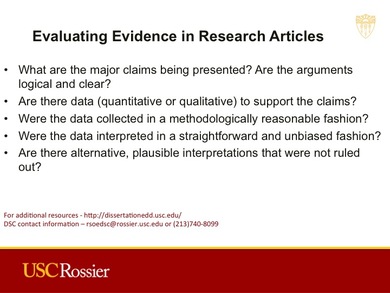Article Summary Table
Topic 4: Literature Review
|
An article summary table is a tool that can help you organize and summarize what you've read. Moreover, it can provide you with a quick glance as to how you might organize articles when you begin to write your literature review.
Once you know your variables and concepts and you start to find articles, it is imperative that you keep track of what you've read. Like the article summary paragraphs, an Article Summary Table is an even shorter and more succinct summary, but also is part of a matrix that helps you see similarities and differences across all the literature you read as you read it. Before you include an article in your summary table, be sure that you have evaluated the evidence presented. Take a look at the PPT slide called Evaluating Evidence in Research Articles and use it as a guide to determine whether or not you will include an article. Read one article you have found and use the questions on the Evaluating Evidence slide to evaluate your article. Begin completing an Article Summary Table for your first 4-5 articles (see Word and Excel document below). Please note: these activities should be conducted BEFORE you write your full literature review or add a resource to your Article Summary Table. However, you can still carry out the Short Literature Review exercise before conducting a full evaluation. Chapter 2 Article Summary and Literature Synthesis Table (.doc) Chapter 2 Worked Example of Lit Review Chart (.xls) |





